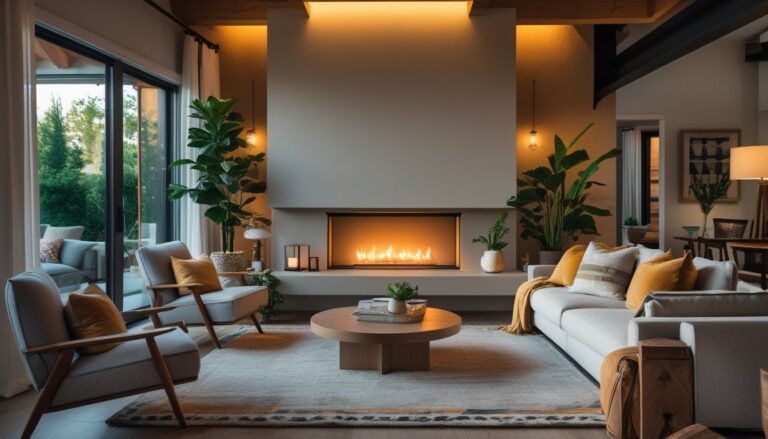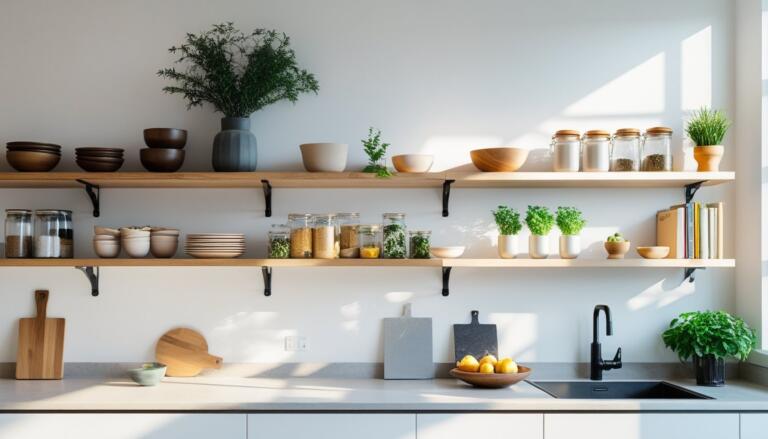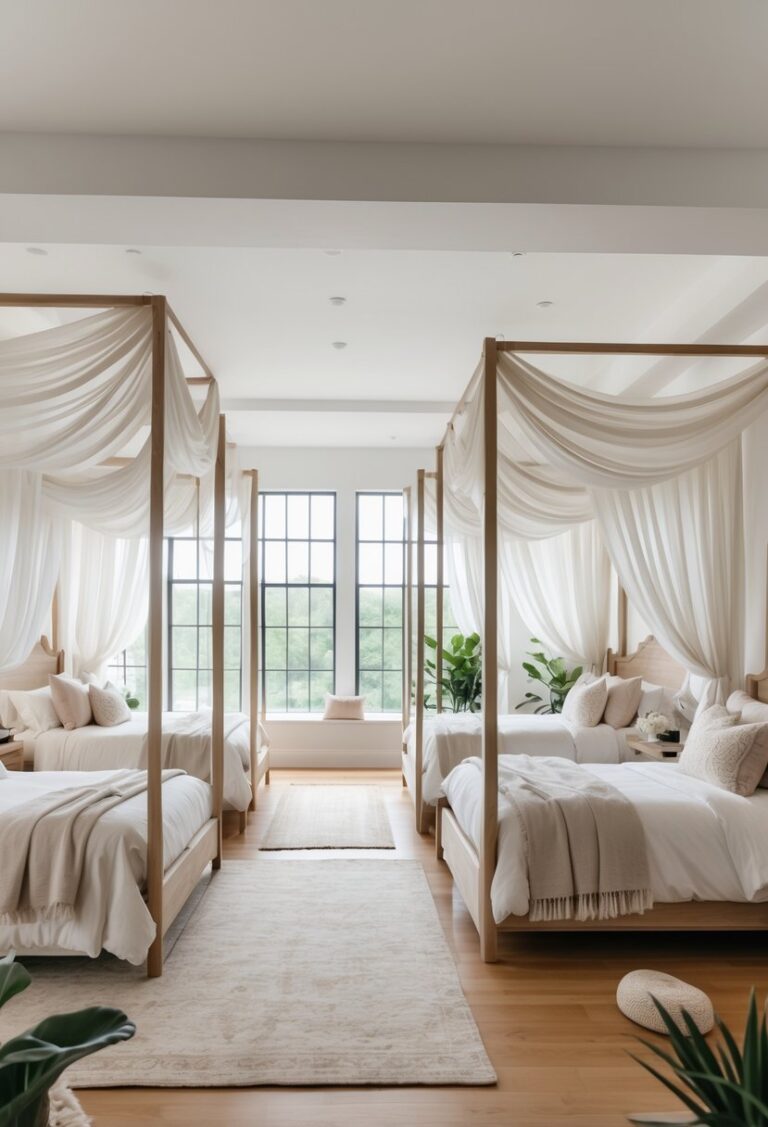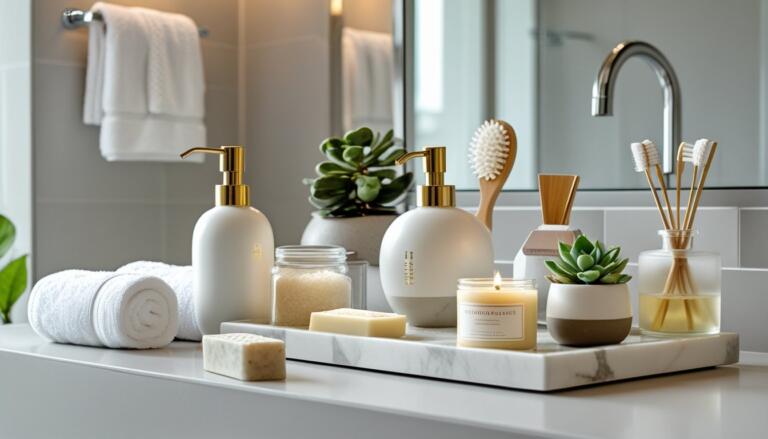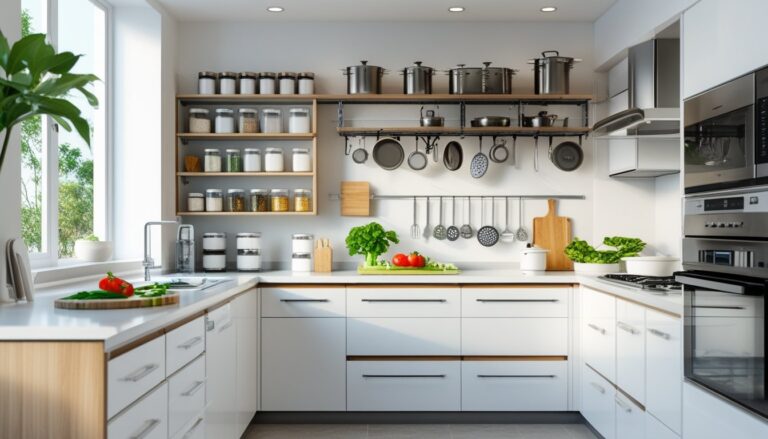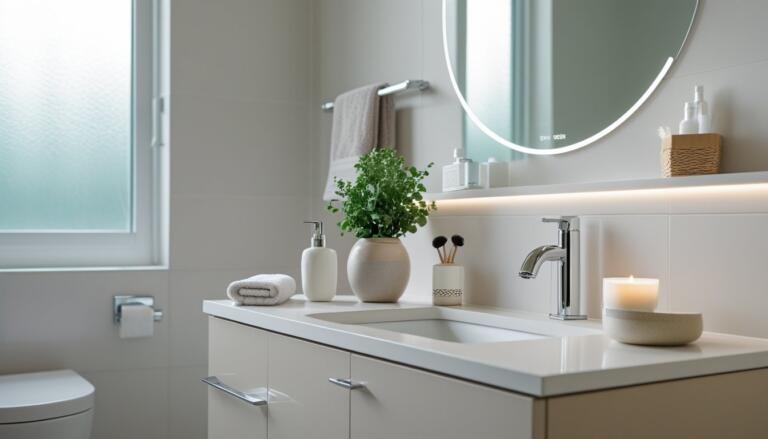10 Small Living Room Designs for Maximizing Space and Style
Small living rooms can feel challenging to design, but they also offer unique opportunities to create cozy and efficient spaces. With thoughtful choices in furniture, color, and layout, even the smallest areas can become inviting and functional.
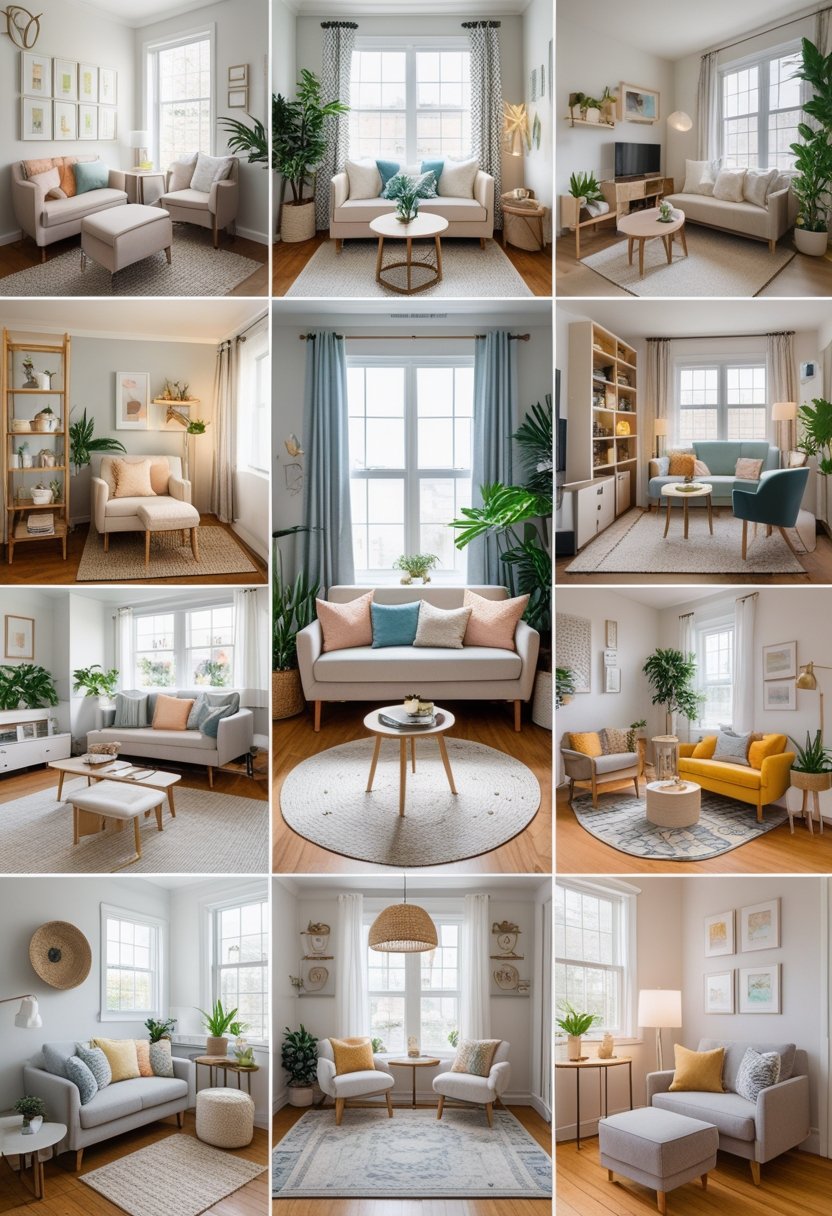
This article shows 10 small living room designs that balance style and practicality to help maximize limited space. These ideas aim to inspire readers to make the most of their living areas without feeling cramped or cluttered.
1) Use light, neutral wall colors to create a sense of spaciousness
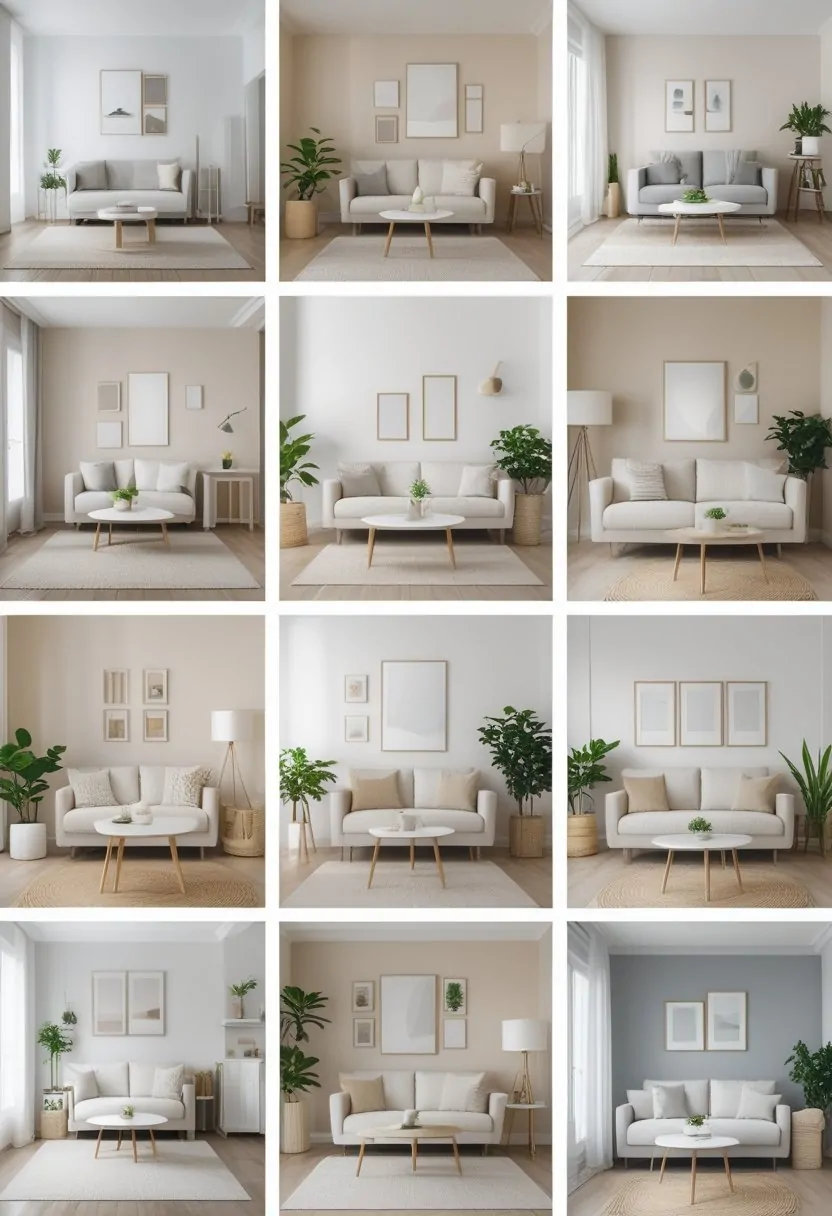
Light, neutral colors on walls help make small living rooms feel larger. Shades like soft white, beige, and pale gray reflect natural light, brightening the space.
These colors create a clean, open backdrop. They prevent the room from feeling crowded or heavy.
By choosing neutral tones, it is easier to add furniture and decor without overwhelming the room. This approach keeps the space calm and inviting.
2) Incorporate multi-functional furniture like storage ottomans
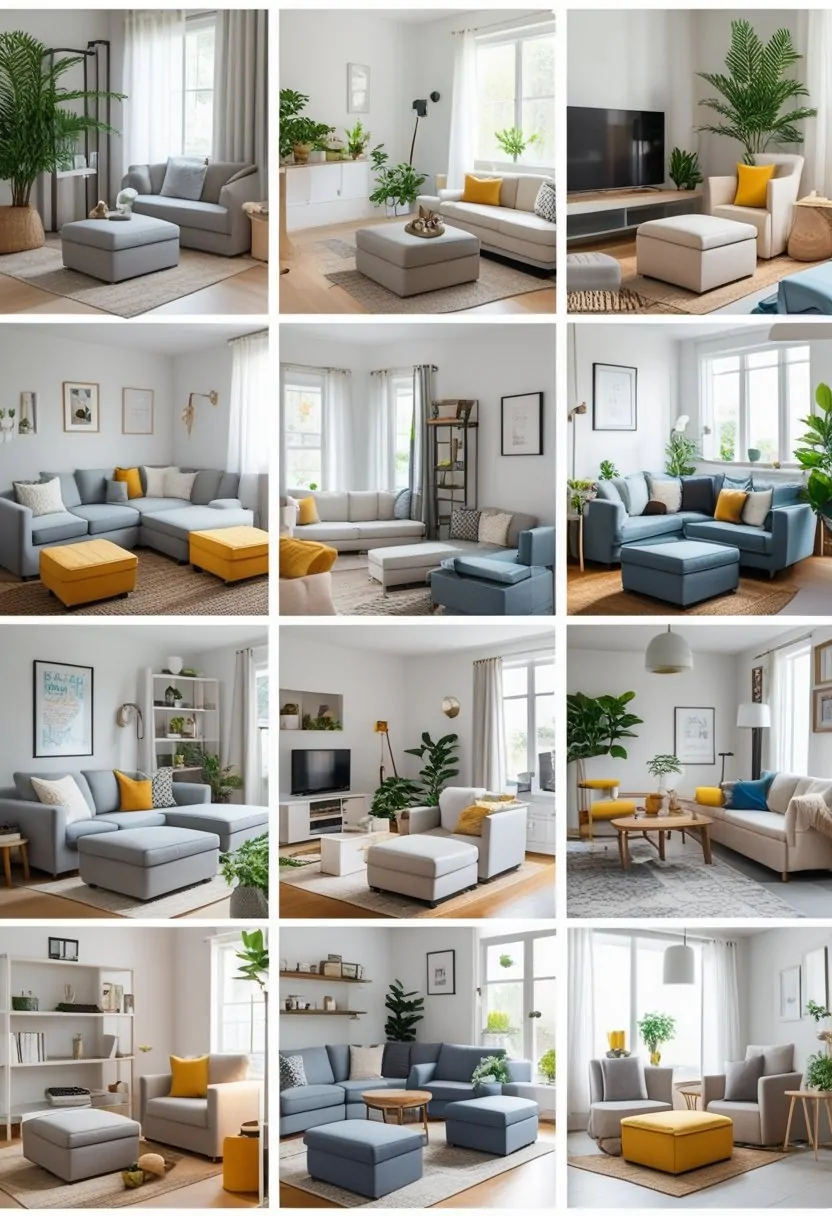
Storage ottomans offer both seating and hidden space to keep items out of sight. They help reduce clutter in small living rooms.
These pieces can also serve as footrests or small tables when needed. This makes them practical for everyday use.
Choosing multi-functional furniture like storage ottomans helps maximize space without sacrificing comfort or style. It supports a more organized living area.
3) Add mirrors to reflect light and visually expand the room
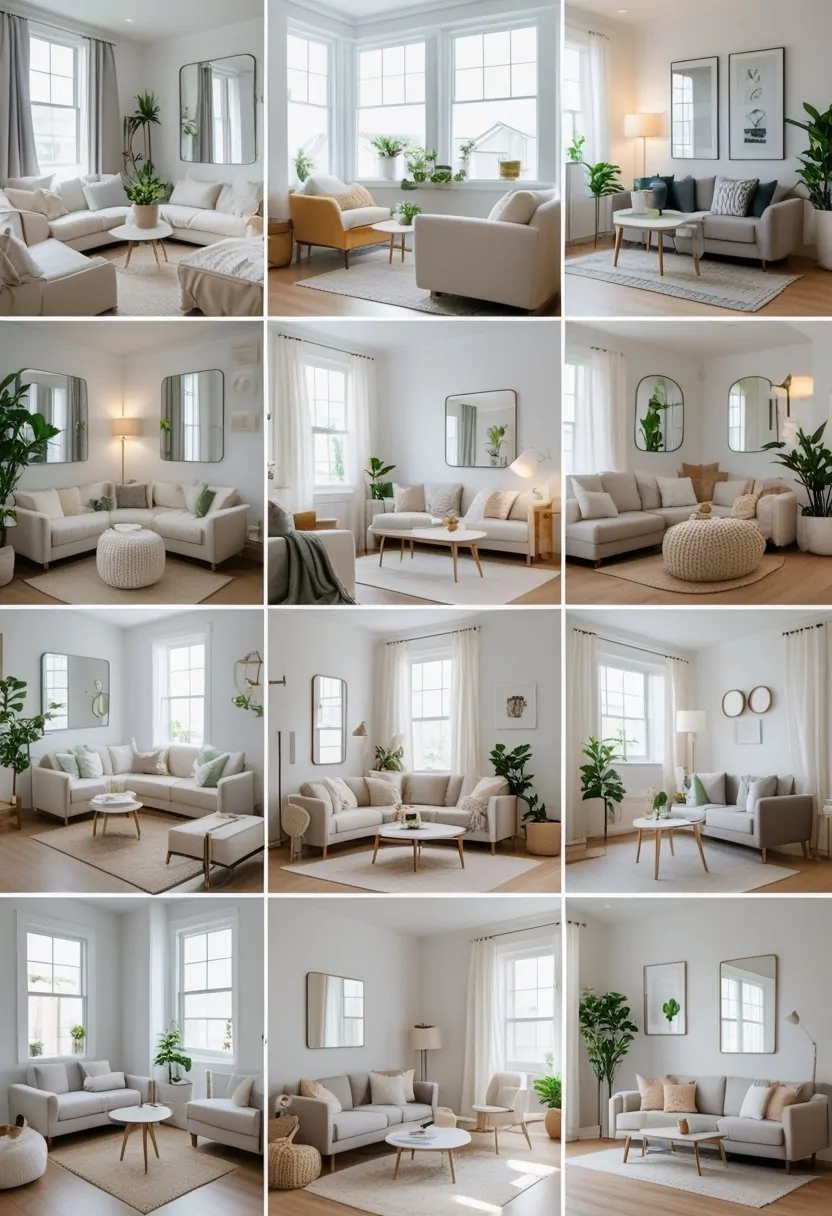
Mirrors help reflect natural and artificial light, making a small living room feel brighter. When light bounces around, the space appears more open and welcoming.
Careful mirror placement can stretch sightlines, making walls seem farther apart. Large or uniquely shaped mirrors become focal points that add style and depth without clutter.
Mirrored furniture or panels behind shelves also add dimension. This approach softens the room’s feel and reduces the sense of crowding, enhancing the overall space.
4) Choose slim-profile sofas and chairs to save floor space
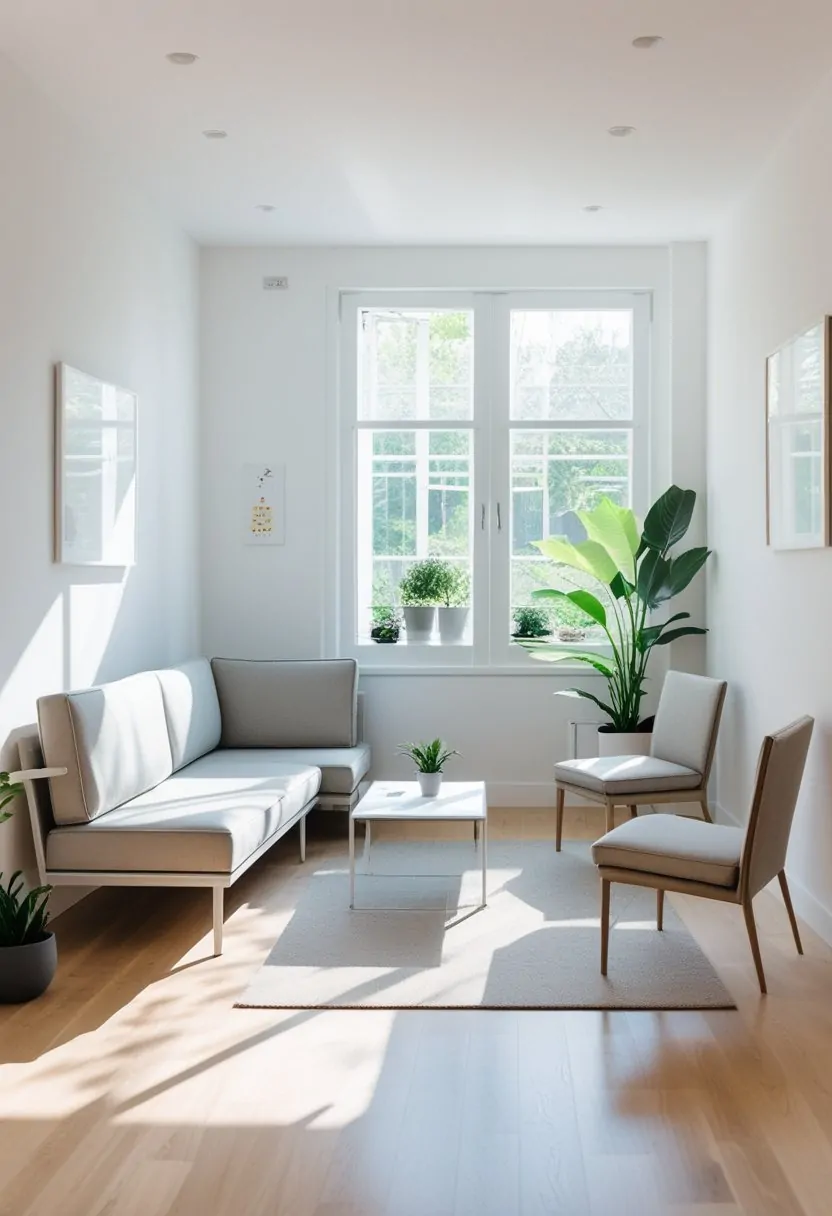
Slim-profile sofas have narrow arms and low backs. This design takes up less room visually and physically.
Chairs with raised legs create an open feeling. They avoid making the space look crowded.
Using compact sofas or loveseats helps keep the room comfortable without overpowering it. These pieces fit well in small living areas.
5) Employ vertical shelving to maximize storage without crowding
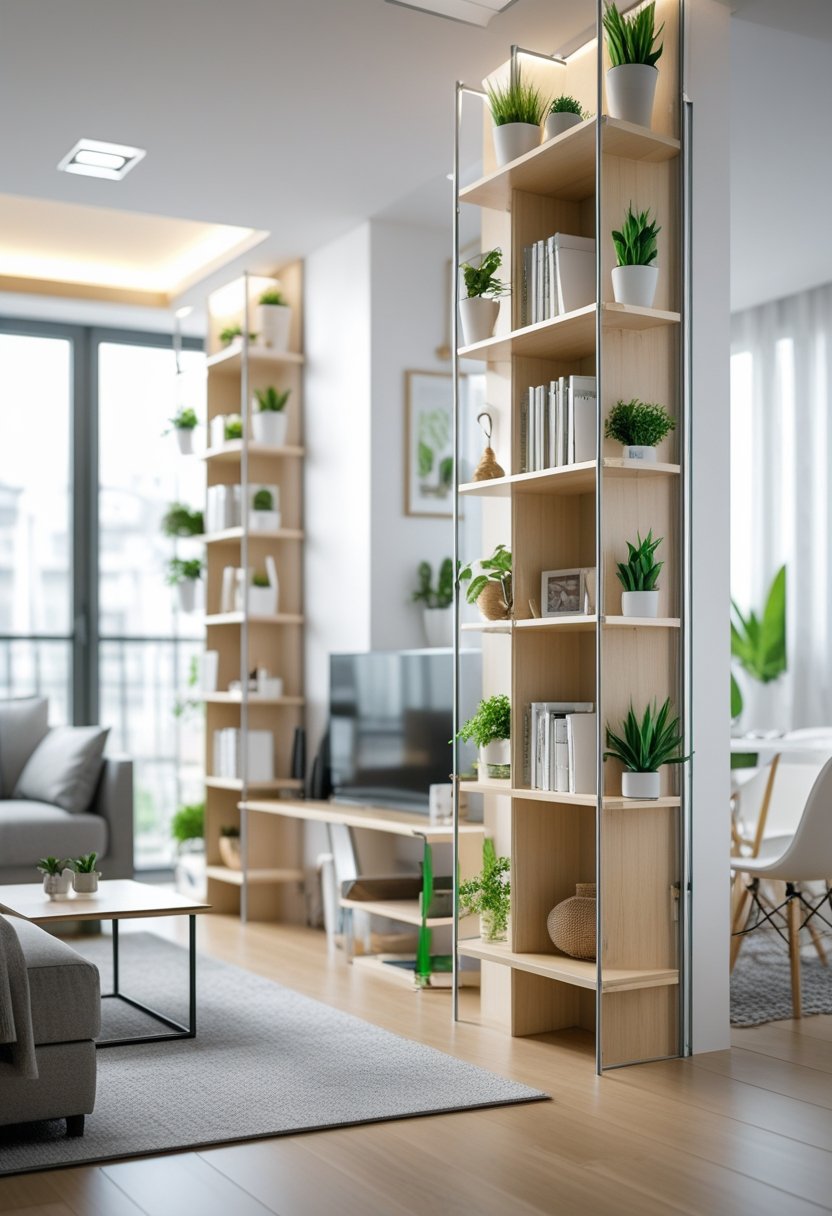
Vertical shelving helps make the most of limited floor space in small living rooms. Tall shelves or floating units use wall space to store books, plants, or decor without cluttering the room.
This approach keeps items organized and accessible while making the room appear more open. It works well over sofas, doors, or in empty corners.
Using vertical shelves also creates visual interest by drawing the eye upward and can make the space feel larger without adding furniture.
6) Use area rugs to define separate zones within the living room
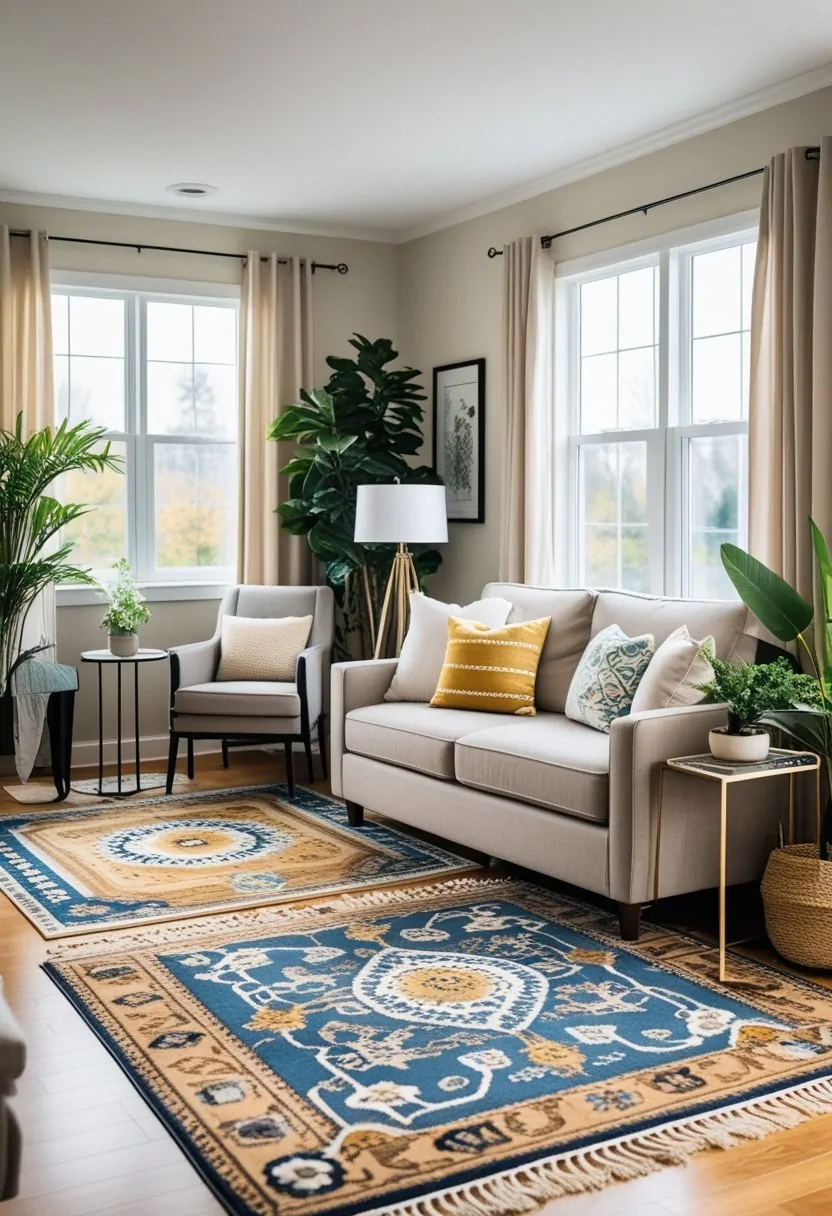
Area rugs help clearly mark different zones in a small living room. They create visual boundaries between spaces like seating, dining, or play areas.
Using rugs of different sizes or colors can separate zones without adding bulky furniture. This method keeps the room open and organized.
Rugs also anchor furniture, making each zone feel intentional and cozy. This helps maximize the use of limited space efficiently.
7) Opt for foldable or nesting tables for flexible surfaces
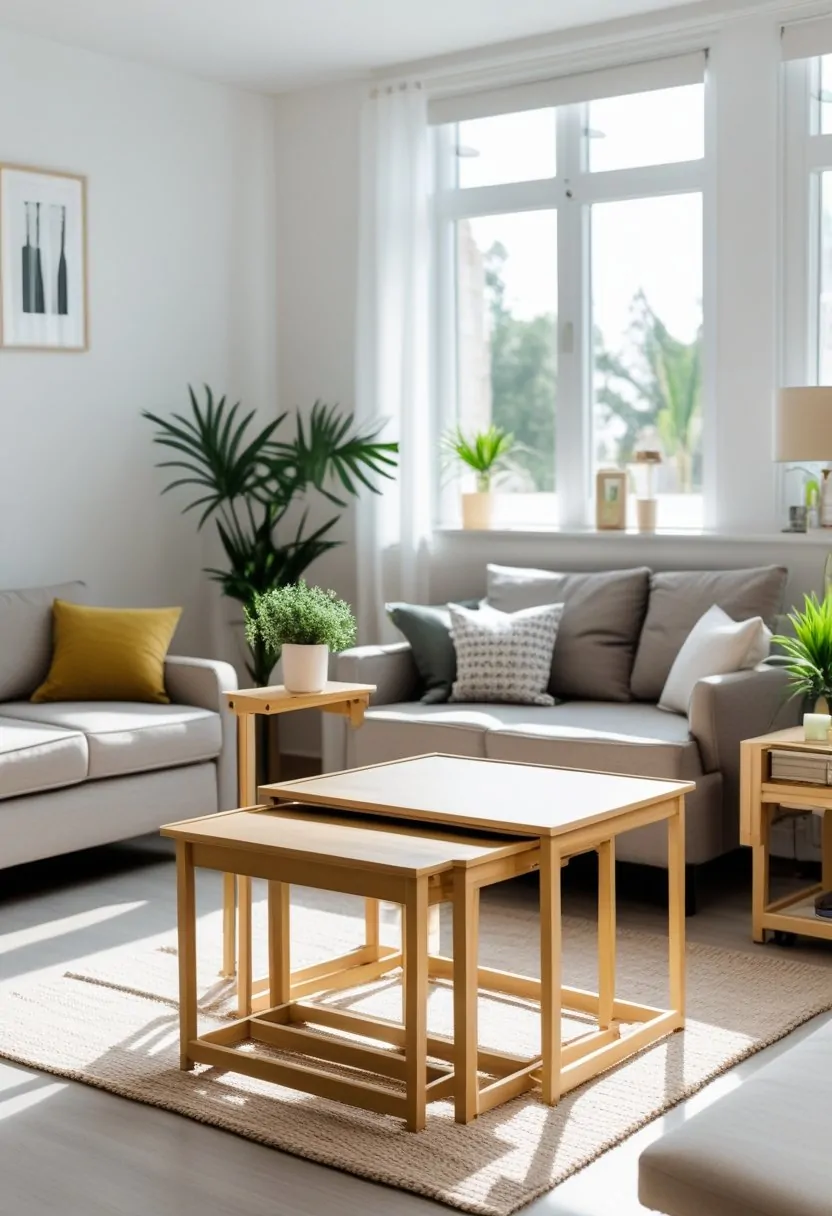
Foldable and nesting tables add practical surfaces without taking up much space. They can be easily stored when not in use, making rooms feel less crowded.
Nesting tables fit nicely together and can be used separately when extra surface area is needed. Foldable tables often convert from coffee tables to dining surfaces, offering versatility.
These tables are ideal for small living rooms where space is limited. They provide functionality while keeping the area open and organized.
8) Incorporate built-in storage benches under windows
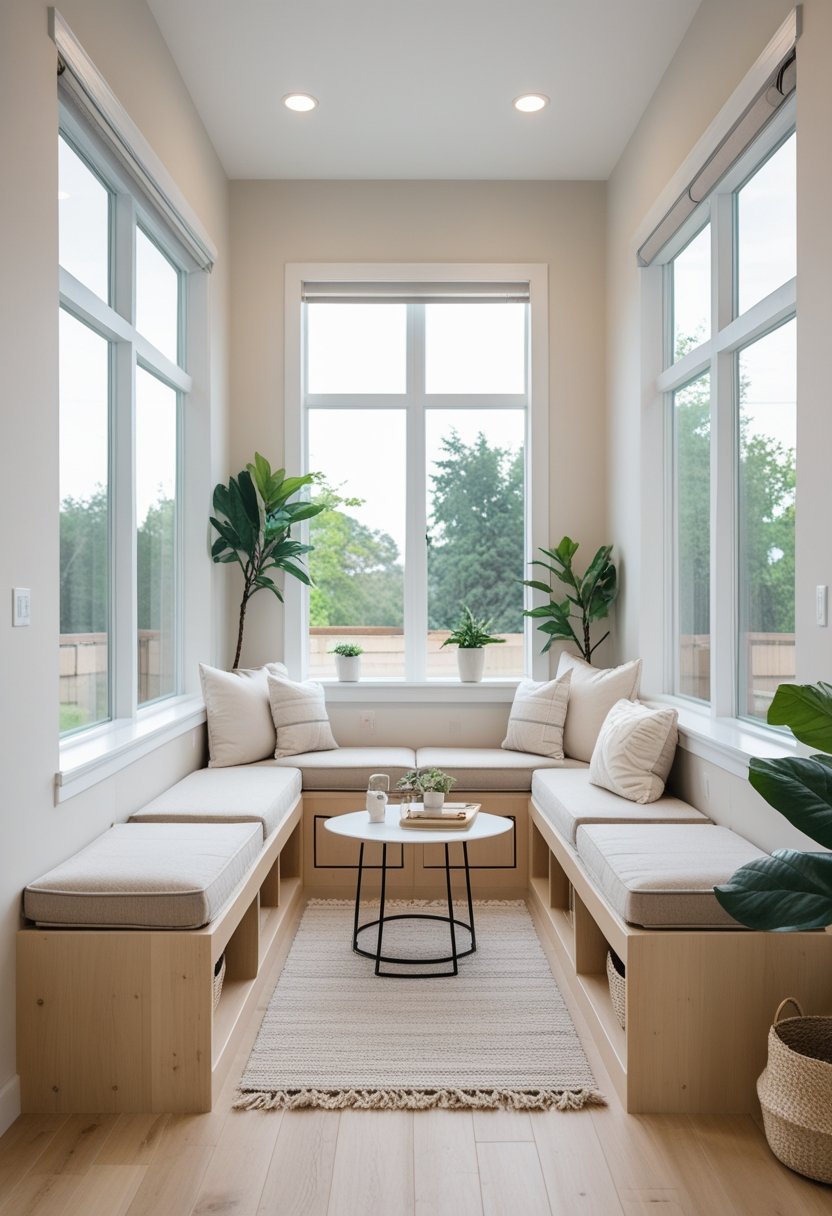
Built-in storage benches under windows make good use of space that often goes unused. They provide extra seating and hidden storage without taking up more floor area.
These benches work well in small living rooms, bedrooms, or dining nooks. People can store blankets, books, or other items inside while enjoying natural light from the window.
Custom or simple designs fit different styles and needs. Adding a built-in bench helps keep the room tidy and adds a practical feature without crowding the space.
9) Select furniture with exposed legs for an airy feel
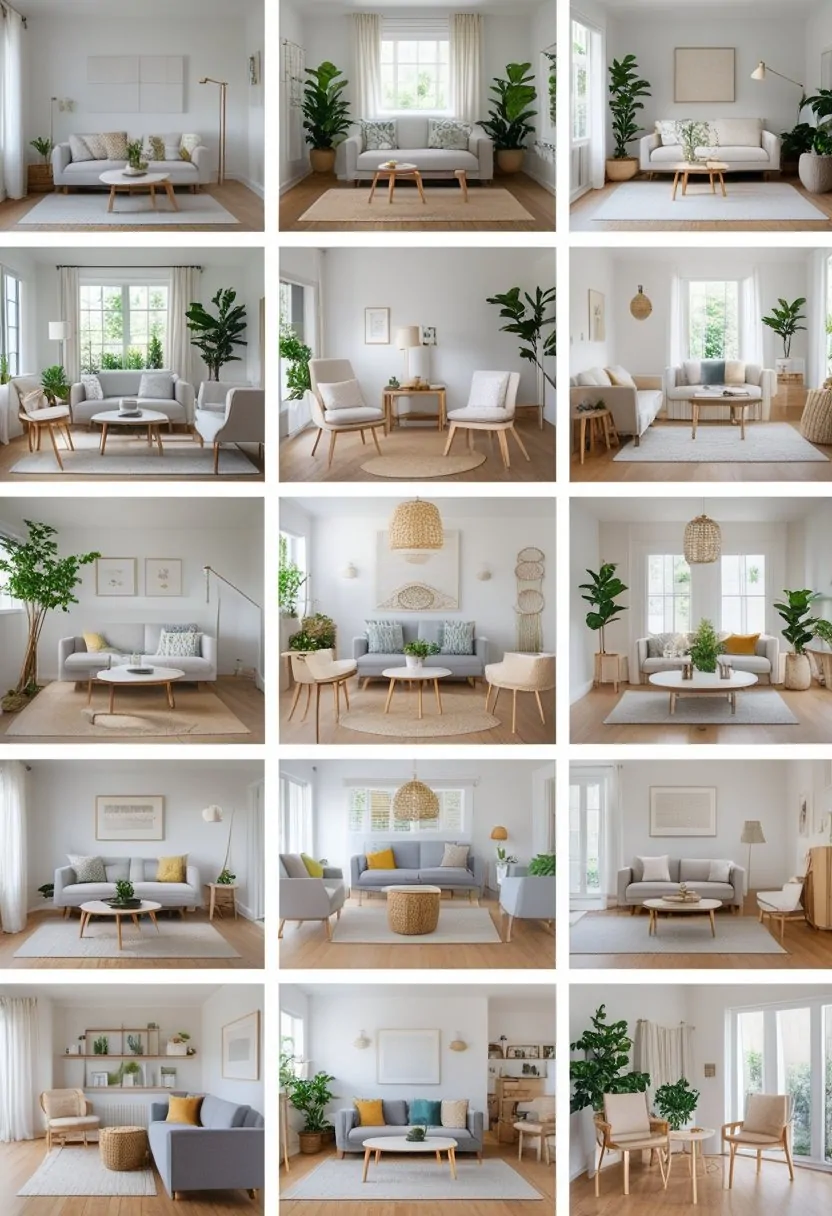
Furniture with exposed legs helps make a small living room feel more open. By showing the floor underneath, it creates extra visual space.
This design choice stops the room from looking crowded or heavy. Sofas, chairs, and tables with legs instead of solid bases work best.
It also makes cleaning easier and adds a light, modern look. This simple change can improve the room’s overall airiness.
10) Use layered lighting: ambient, task, and accent
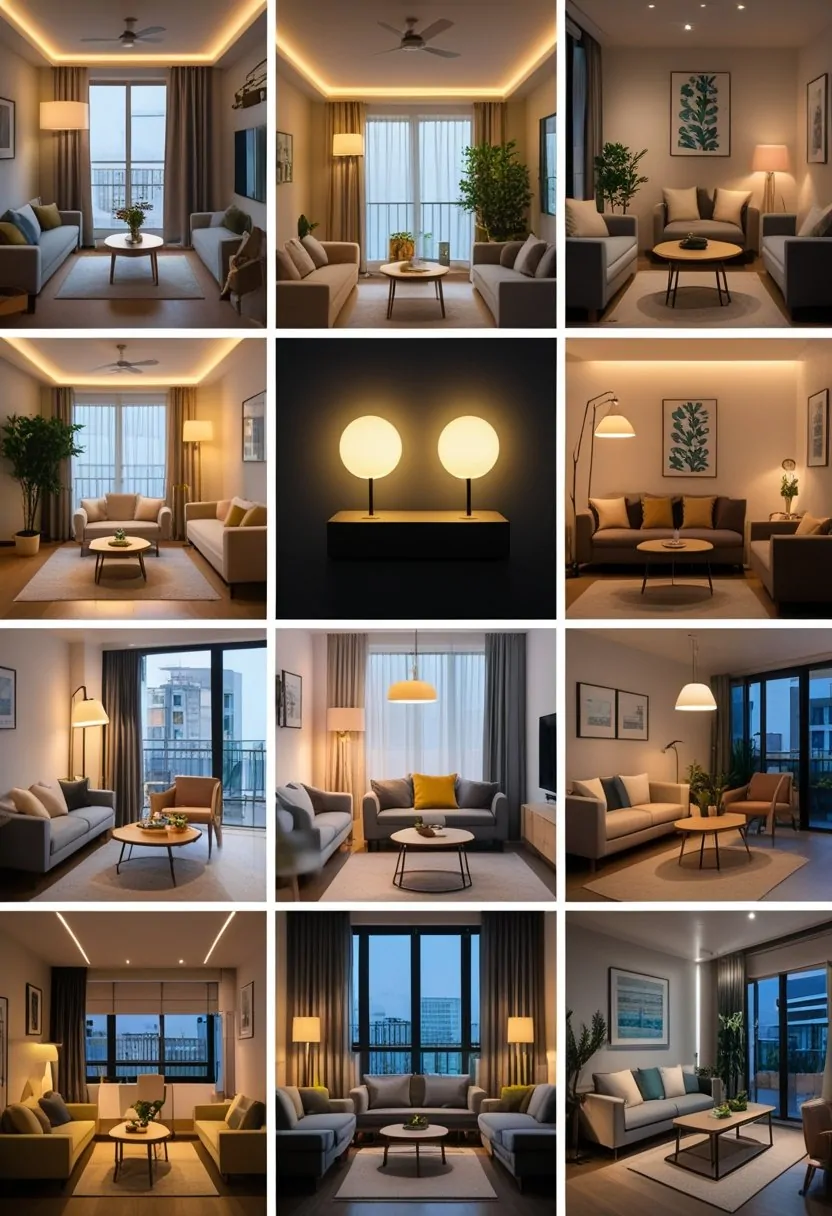
Layered lighting adds depth and function to a small living room. Ambient lighting provides overall light, making the space feel open. Task lighting focuses on specific activities like reading or working.
Accent lighting highlights artwork or architectural details, adding visual interest. Using all three types helps balance brightness and creates a cozy, practical space. It also allows for flexibility depending on the room’s use.
Small Living Room Design Principles
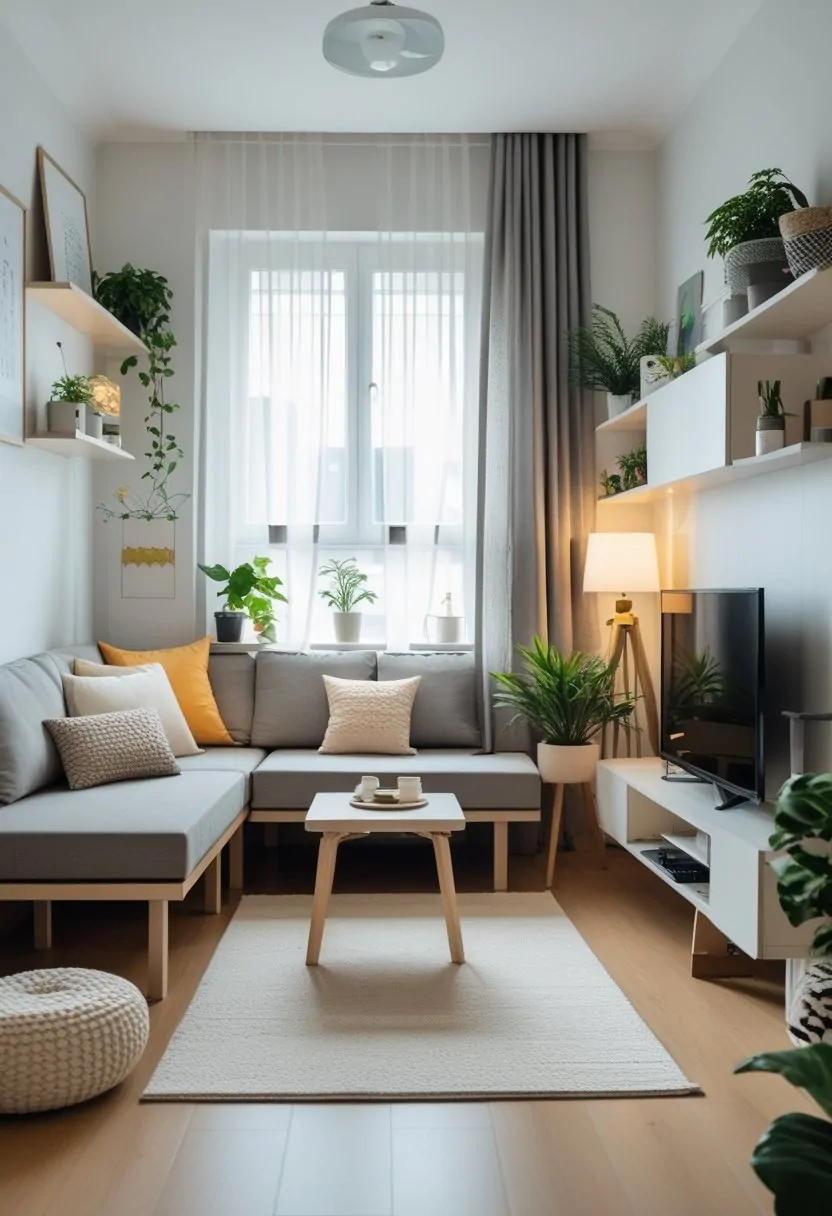
Effective small living room design focuses on making the most of limited space while creating a comfortable, inviting atmosphere. Careful furniture arrangement helps open the floor, and smart use of light and color can make the room feel larger and brighter.
Maximizing Space With Furniture Placement
In a small living room, furniture placement should prioritize open pathways and clear sightlines. Placing larger pieces against walls frees up central space for movement and activity. Multipurpose furniture, like ottomans with storage or fold-out sofas, can add function without crowding.
Using smaller-scale furniture and avoiding overstuffed seating helps keep the room feeling airy. Floating furniture away from walls can create a sense of depth, but only if it does not block walkways or natural flow.
A useful tip is to focus on vertical space: tall bookshelves, narrow cabinets, or wall-mounted units add storage without taking up much floor area. Grouping furniture in conversation zones helps define areas without walls or barriers, which supports a more open feeling.
Balancing Light and Color
Good lighting makes a small room feel bigger. Natural light should be maximized by keeping windows clear of heavy curtains. Using sheer fabrics or blinds allows light in while maintaining privacy.
Artificial lighting needs layers: overhead fixtures provide general light, while lamps or wall sconces add softer accents. Positioning mirrors opposite light sources reflects brightness and adds visual depth.
Color choices also affect a room’s perceived size. Lighter shades on walls and ceilings create an airy feeling. Using a consistent color palette with subtle contrasts prevents visual clutter.
Bold accents should be used sparingly to avoid overwhelming the eye. In small living rooms, neutral bases combined with one or two accent colors often work best to keep the space balanced and pleasant.
Common Challenges in Small Living Rooms
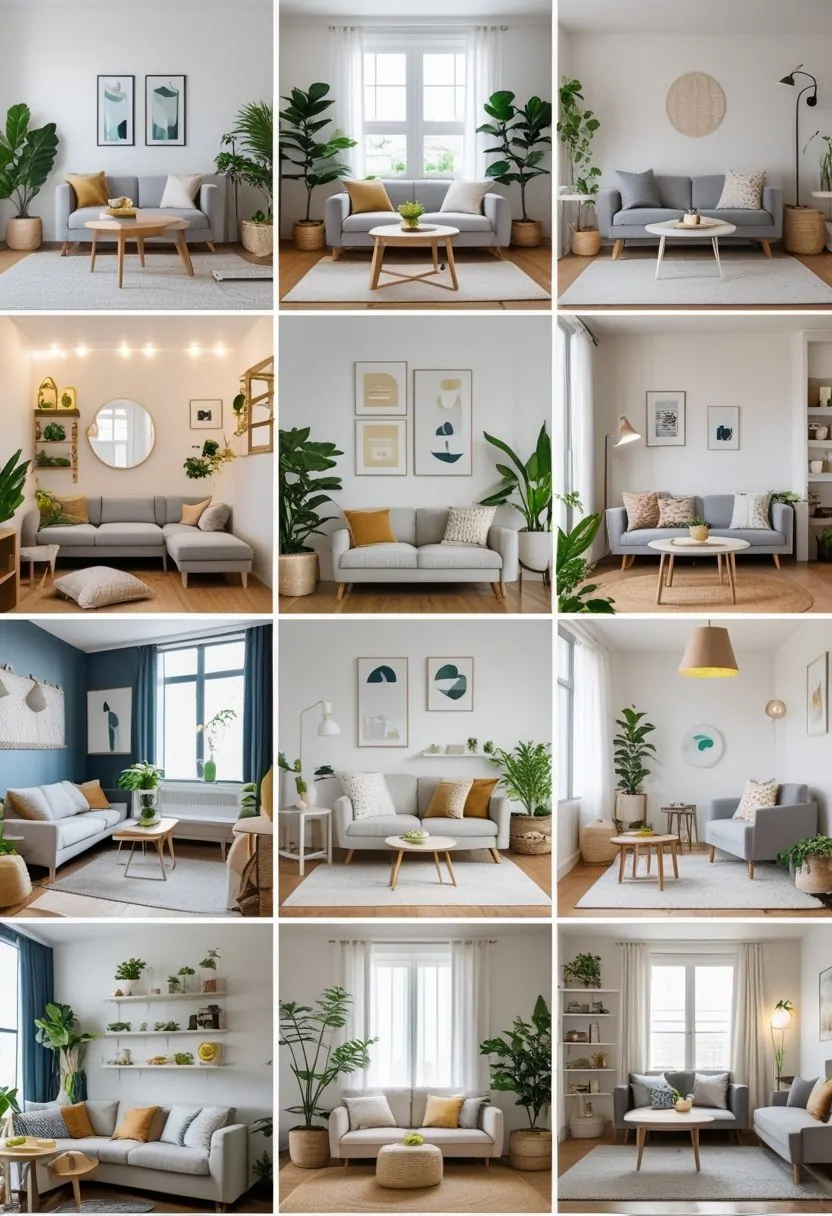
Small living rooms often struggle with fitting enough storage while keeping the space open and comfortable. They also face the problem of visual clutter, which can make the room feel even smaller. Managing these issues is essential to create a functional and pleasant space.
Addressing Storage Needs
Limited square footage means storage must be smart and efficient. People often use multi-purpose furniture such as ottomans with hidden compartments or coffee tables with shelves. Wall-mounted shelves and vertical storage units help free floor space.
Built-in storage solutions can fit awkward corners and under windows. It is important to avoid bulky furniture that takes up too much room. Instead, choosing slim, tall pieces keeps the room feeling open.
Decluttering regularly also helps maintain a clean and organized living area. Without adequate storage planning, small living rooms quickly become cramped and uncomfortable.
Overcoming Visual Clutter
Visual clutter reduces the feeling of space and creates chaos. To combat this, a consistent color palette with light tones can make walls and furniture appear larger. Mirrors also reflect light and open up the room visually.
Limiting decorations and keeping surfaces clear prevents overcrowding. Grouping items in baskets or boxes hides smaller things but keeps them accessible.
Furniture with clean lines and simple shapes reduce visual noise. The goal is to keep the room tidy and easy to navigate, ensuring it feels inviting rather than cramped.
Frequently Asked Questions
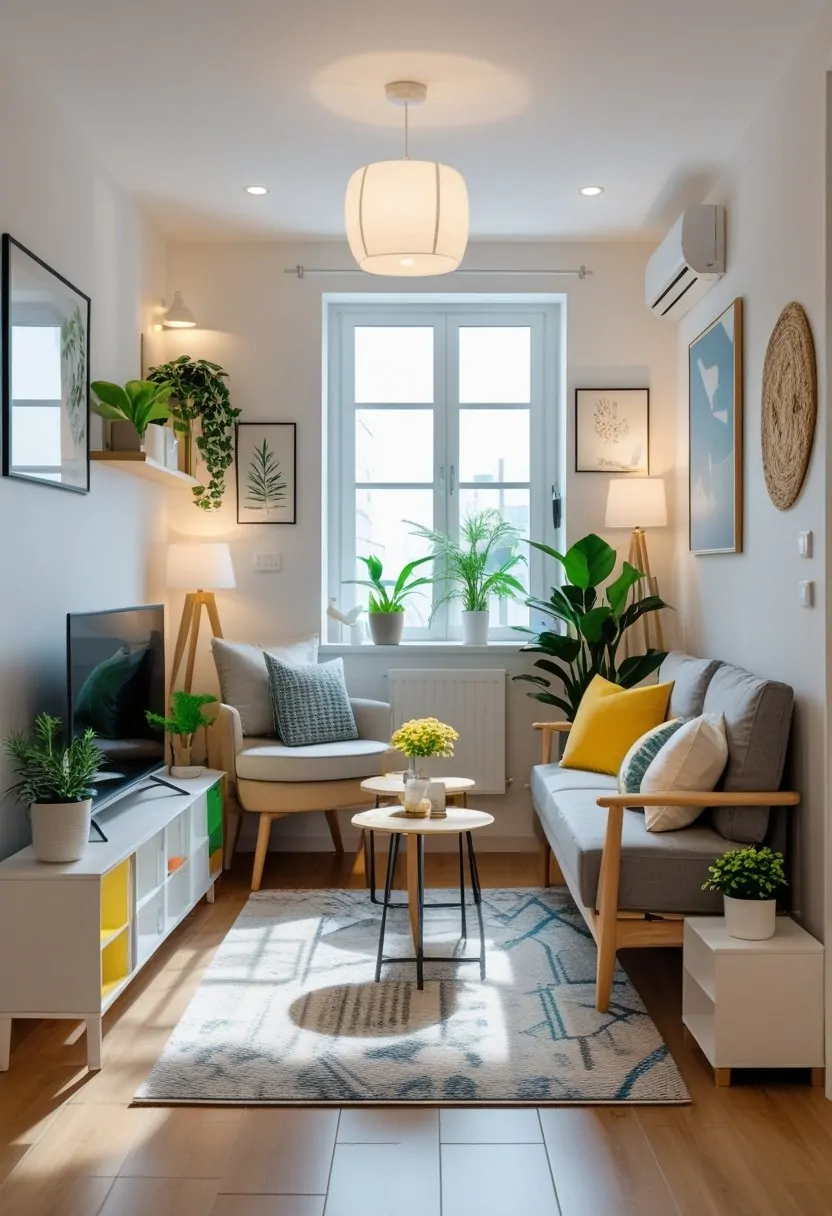
Small living rooms benefit from thoughtful arrangements, color choices, and smart use of technology. Proper layout improves movement and function, while specific colors can make spaces feel larger. Carefully placing a television also helps keep the room balanced.
How can you optimize furniture placement in a small living room for better flow?
Furniture should be arranged to keep pathways clear and maintain open sight lines. Choosing slim-profile sofas and chairs saves floor space and prevents crowding. Multi-functional pieces like storage ottomans add utility without adding clutter.
Vertical shelving is ideal for storage without using precious floor area. Positioning larger furniture against walls frees up the center of the room, creating a better flow and a sense of openness.
What are some effective color schemes for small living spaces?
Light, neutral colors such as warm white, light gray, or soft beige work best. These shades reflect light, making the room feel bigger and brighter. Dark colors, when used heavily, can make a small room feel cramped.
A consistent color palette with soft tones on walls, furniture, and decor creates visual continuity. Accents in muted colors can add interest without overwhelming the space.
How can one incorporate a television in a small living room without it dominating the space?
Mounting the TV on the wall keeps floor space free and minimizes its visual weight. Placing the TV opposite seating avoids awkward angles and keeps the room balanced.
Choosing a TV size proportional to the room is important. Using furniture that hides cables and provides extra storage keeps the area tidy and reduces distractions.

